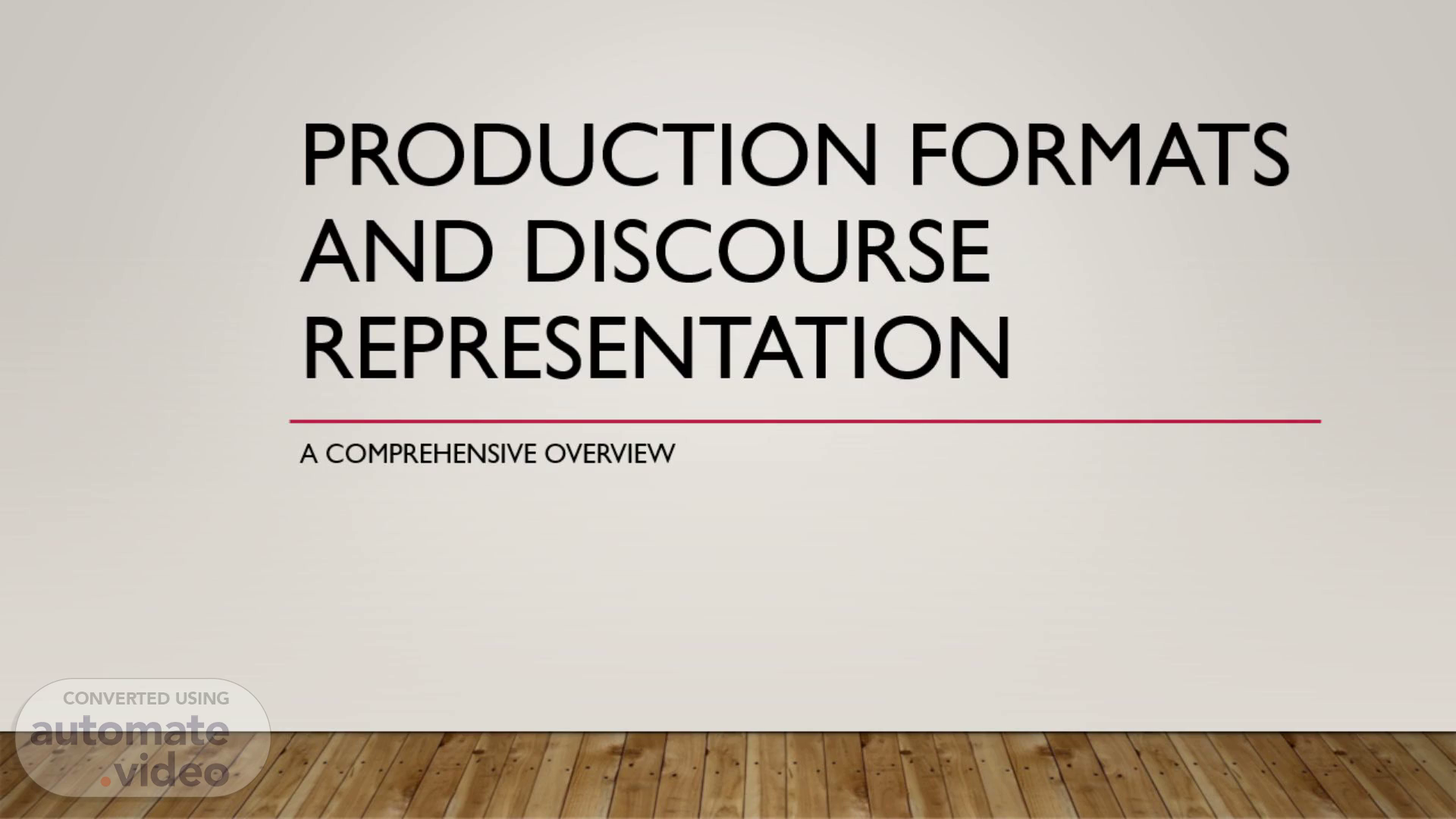
Page 1 (0s)
Production Formats and Discourse Representation. A Comprehensive Overview.
Page 2 (6s)
Introduction. Communication is a complex process involving the transmission and reception of information. Production formats dictate the specific means of conveying the message. This presentation explores the interplay between production formats and discourse representation..
Page 3 (19s)
Production Formats. Written – Essays, letters, report, articles. Spoken – Conversations, speeches, presentations, podcasts. Multimodal – Websites, videos, social media posts..
Page 4 (30s)
Discourse representation. Structure – How information is organized and presented. Language – Word choice, tone, formality. Visuals – Images, graphics, videos. Nonverbal cues – Gestures, facial expressions..
Page 5 (42s)
Theoretical frameworks. Speech act theory – Language performs actions like requesting, promising, apologizing. Gricean maxims – principles guiding effective communication like quantity, quality, relevance, manner..
Page 6 (54s)
Speech act theory examples. Written letter of resignation – formal declaration of leaving a position. Spoken resignation in a meeting – informal announcement of leaving..
Page 7 (1m 4s)
Gricean maxims examples. Quantity – concise academic writing vs. detailed blog post. Quality – truthful news report vs. opinion piece Relevance – focused presentation vs. rambling conversation..
Page 8 (1m 15s)
written communication. Punctuation – commas, period, question marks. Paragraphing – breaks between paragraphs. Lexical choices – formal vs. informal vocabulary..
Page 9 (1m 25s)
spoken communication. Intonation – rising intonation at the end of a question. Pauses and hesitations – long pauses before making a significant point. Body language – gestures and facial expressions..
Page 10 (1m 37s)
Multimodal communication. Visual elements – images, videos, graphics. Interactive elements – hyperlinks, buttons, polls. Accessibility features – captions, alternative text..
Page 11 (1m 47s)
Effective communication. Audience awareness – choose the appropriate format for the intended audience. Clarity and conciseness – use appropriate language, structure and visuals to convey the message. Cultural sensivity – be aware of cultural norms and expectations regarding proclduction formats and discourse styles..
Page 12 (2m 2s)
Case study: social media marketing. Instagram – visual-heavy, short captions, hashtags. Twitter – short, concise, messages, links. Facebook – longer posts, images videos, links..
Page 13 (2m 14s)
Case study: academic research. Journal articles – disseminate, findings. Conference presentations – shares preliminary findings. Online repositories – makes research accessible..
Page 14 (2m 24s)
Conclusion. Production formats play a significant role in shaping discourse representation and influencing how information is communicated and interpreted. By understanding the theoretical frameworks and format-specific features, we can effectively navigate the complexities of communication across various mediums..
Page 15 (2m 37s)
This knowledge empowers us to choose the most appropriate format for our audience, ensure clarity and conciseness, and foster effective communication in diverse contexts..
Page 16 (2m 48s)
References. - Austin, J. L. (1962). How to do things with words. Oxford University Press. - Grice, H. P. (1975). Logic and conversation. In Syntax and semantics (Vol. 3, pp. 41-58). Academic Press. - Searle, J. R. (1969). Speech acts: An essay in the philosophy of language..
Page 17 (3m 7s)
Thank you for listening! (. ❛ ᴗ ❛.). Reporters from Group 7: Sheena Faye K. Jambonggana April Lou Caroro Baroy Christian Ivan B. Lague Archei Clair L. Anyag Mary Althea Pahimutang.